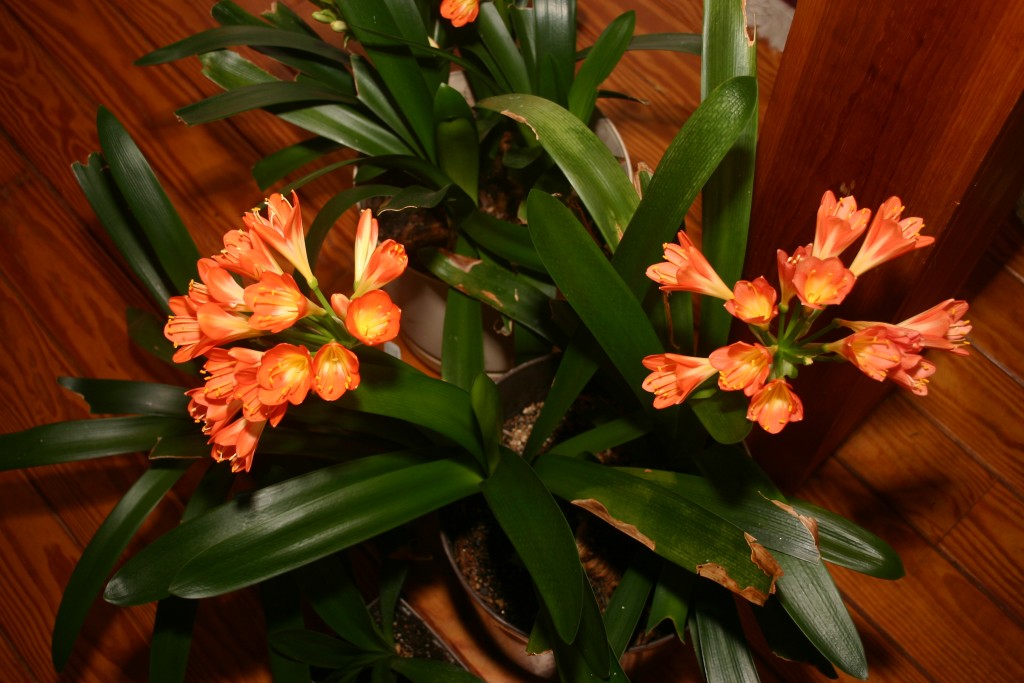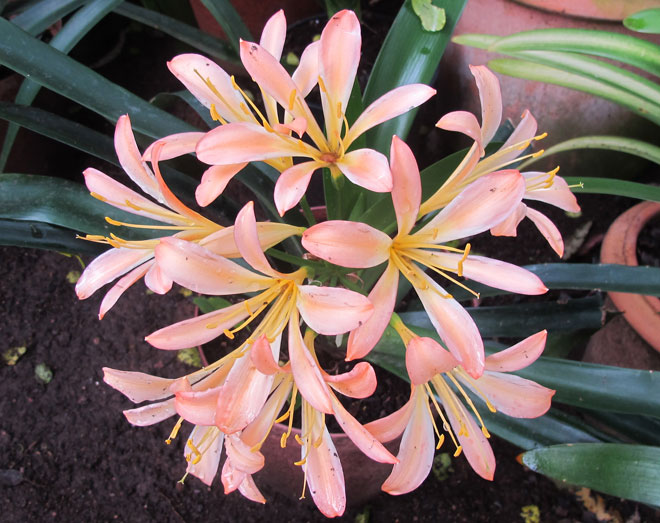 Europeans discovered clivias in Cape Province, South Africa, in 1815, and soon after some of the plants were taken to England. The Duchess of Northumbria, Lady Charlotte Percy (nee Clive) first succeeded in getting them to flower there, so the genus was called Clivia in her honor.
Europeans discovered clivias in Cape Province, South Africa, in 1815, and soon after some of the plants were taken to England. The Duchess of Northumbria, Lady Charlotte Percy (nee Clive) first succeeded in getting them to flower there, so the genus was called Clivia in her honor.
Although more than 1,000 clivia cultivars and hybrids have been produced, according to the Clivia Society Register (www.cliviasociety.org) based in South Africa, there are only six clivia species, some of which look quite similar. Clivia miniata, with its trumpet-shaped orange flowers, is probably the best known. (see note below)
How to care for clivias to get beautiful blooms is an often-asked question. When buying a clivia, try to pick one that is already in flower and has glossy, deep-green leaves. The plant should not be excessively crowded in its pot, although the roots may be visible on the soil surface. Some people plant clivia in ordinary potting soil, but experts generally use coarse compost mixed with pine bark or a similar substance.
During the growing season, clivias should be fertilized regularly with an all-purpose fertilizer (20-20-20 is fine). To avoid burning the leaves, keep these plants in bright, but somewhat shaded sunlight in summer. An east or west-facing location is ideal. As winter comes on, the plants will go dormant and can be placed in a much shadier spot in your greenhouse. During winter, keep them almost, but not quite completely dry for about eight weeks. (Some growers say do not water them at all during this time.) Also keep them cool, below 50° F and down as low as 38° F, but don’t let them freeze. If you keep the plants too warm in winter, the subsequent flowers will grow low among the leaves rather than reaching up above them.
You should not have to repot a clivia until several new plants have grown in an existing pot. Clivia seem to like being a little bit pot-bound, so when transplanting and dividing up the roots, put the plants into pots only slightly larger than the root ball. Then simply follow the steps outlined above to get more of these bright-colored, showy flowers.
Species Note:
Clivia Miniata is the most common clivia with trumpet shaped orange flowers.
C. nobilis, named after the duchess, has orange flowers tipped with yellow or green and is not so well known.
Clivia gardenii has flowers of an orange-peach color, although one variant has whitish-yellow flowers. The often large C. caulescens is very similar to C. nobilis in color but its blooms may have greenish edges too.
The other two species, C. robusta and C. mirabilis, are quite new to the genus. C. robusta was formerly thought to be part of C. gardenii but was reclassified about ten years ago, and C. mirabilis was found in the wild only at the start of the twenty-first century.










